When talking about MTB drivetrains, E*thirteen isn’t the first name to pop into our minds. Nevertheless, the Californian manufacturer offers a wide range of components that are compatible with the drivetrains of all of the major component manufacturers. We‘ve literally dragged E*thirteen’s drivetrain components through the mud for a whole year to find out how they perform.
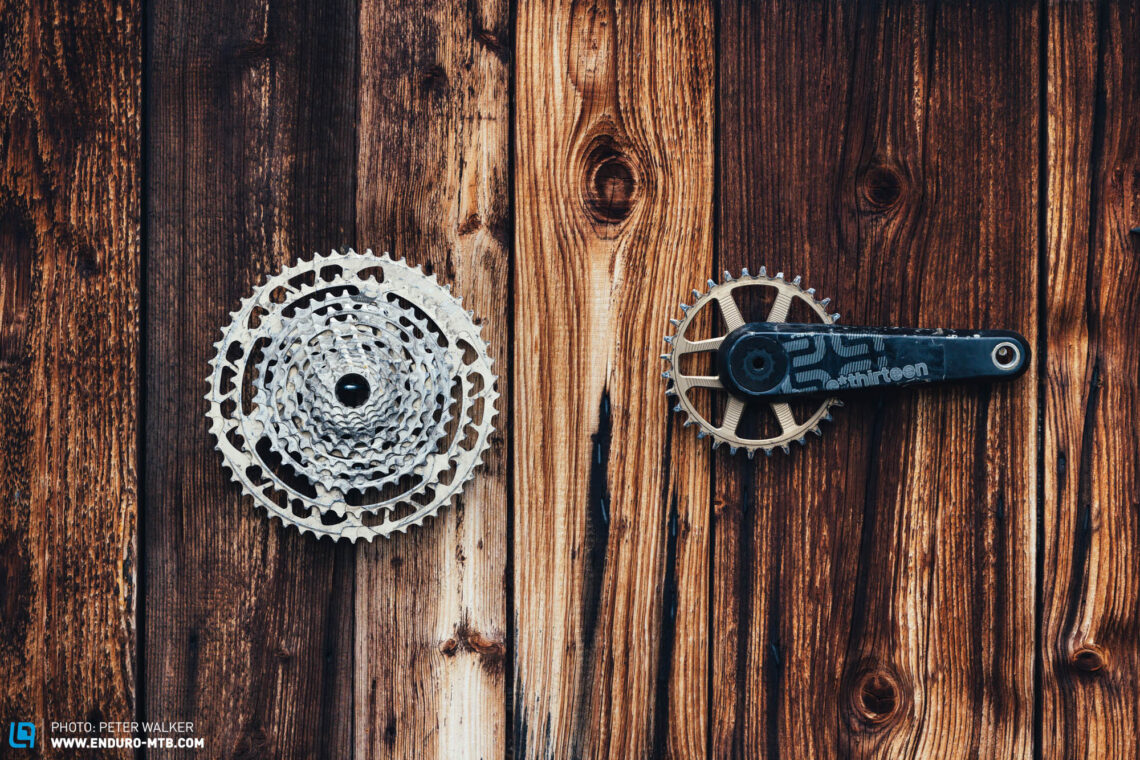
E*thirteen started off in 2001 as a small boutique brand developing and manufacturing chain guides. The brand is now known worldwide and offers a wide portfolio of components which includes dropper posts, wheels, tires and drivetrains. Over the past year, we thoroughly tested an E*thirteen drivetrain, which consists of an XCX Race carbon crankset and a Helix Race cassette. The XCX Race carbon cranks were designed specifically for cross-country, while the Helix Race cassette is intended to cover a wide range of applications. Not only can it be perfectly matched to your bike thanks to the countless available colours, but it also comes with several features that might not be obvious at first glance. For starters, the drivetrain components are compatible with derailleurs and chains from SRAM, Shimano and TRP, and, on top of that, at 578 %, the Helix Race cassette has the widest gear range currently available on the market, spanning from 9 to 52 teeth. The complete package consisting of the cranks, chainring and cassette retails at € 875.93, tipping the scales at 798 g – to which you’ll have to add the weight of the rear derailleur, shifter and chain.

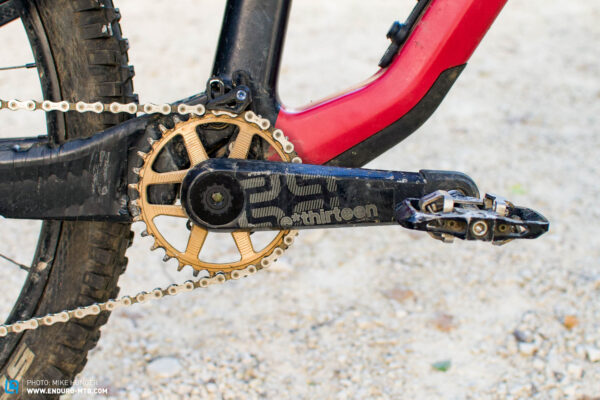
Getting the E*thirteen drivetrain on your bike is pretty straightforward if you already know how to install a Shimano or SRAM drivetrain. First off, you have to thread the E*thirteen bottom bracket into the frame using the special tool supplied. Now you can attach the E*thirteen Helix Race chainring directly to the crank arm using the lockring, push the XCX Race carbon crank spindle through the bottom bracket and secure it to the other crank arm. Like with most cranks, you’ll have to remove the side-to-side play using the crank preload ring, which feels quite robust considering it’s made of plastic, and resisted our efforts to damage it by over tightening it.. Assembly instructions are included in the package, making it easy even for inexperienced home mechanics to install the drivetrain components.
The Helix Race cassette consists of two parts, with ten robust steel sprockets in the higher gears (9-36 T) and two lightweight aluminium sprockets in the lower range (43-52 T). This means that in case of damage or excessive wear, you can replace just one part of the cassette. E*thirteen developed their own cassette locking system, which relies on an additional 3mm pinch bolt to secure the aluminium portion of the cassette to your MICRO SPLINE or XD driver. Once that’s done, you can slide the steel sprockets over the driver body and lock it in place using a conventional cassette tool. The two parts of the cassette are then secured together with a separate, 3 mm set screw, which prevents them from coming loose. As a result, the E*thirteen Helix Race cassette is slightly more complicated to install than a conventional SRAM or Shimano cassette, which you just have to slide over the driver body and tighten with the lock ring. But let’s be honest: once you’ve installed a cassette, you won’t be touching it for a while!
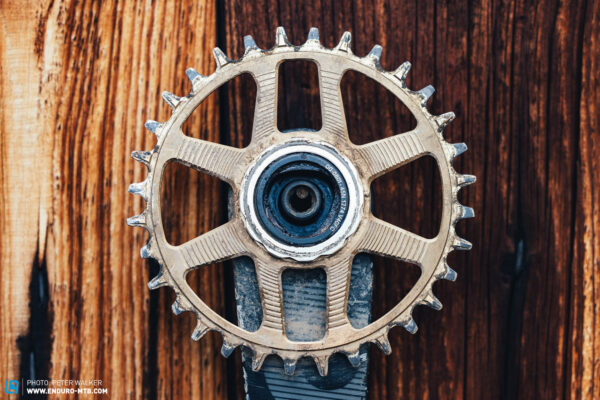
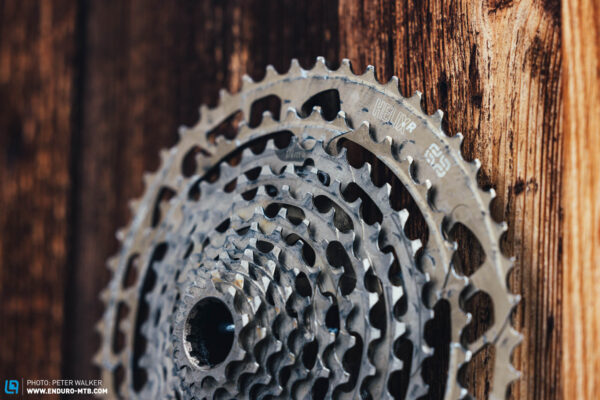
We paired the E*thirteen XCX Race carbon cranks, Helix Race chainring (32 T) and Helix Race cassette with a SRAM XX1 AXS rear derailleur and matching chain. We tested the drivetrain over the course of the year, both on our home trails and in countless bike park sessions – and even took part in a few enduro races. Throughout this time, the E*thirteen drivetrain worked flawlessly and reliably, both uphill and down. If you tackle steep climbs on your local mountain, the Helix Race cassette’s wide gear range provides a suitable option for most gradients. The gear steps aren’t too massive, so you don’t find yourself wishing for gears in-between the ones you have. However, shifting isn’t quite as smooth as with a Shimano XT drivetrain, for example, and sometimes takes a little longer for the chain to engage properly on the sprockets. However, this is only a minor issue and only really matters if you’re chasing the podium on an enduro stage – it didn’t bother us on relaxed bike park laps. Over the test period, the drivetrain took a real beating and was exposed to all possible conditions, from thick mud to sand and dust. Except for a few scuff marks on the cassette teeth, which might look a bit rough but don’t affect its functionality, the Helix Race delivered a solid performance. The E*thirteen XCX Race carbon crankset took a few knocks too, but made it through our long term test unscathed, with only some cosmetic damage. The front of the crank arms are covered in a protective film, which prevents them from heel rub – at least to some extent. Although the XCX cranks are designed specifically for XC, they passed our long term tests with flying colours.
Our conclusions about the E*thirteen Helix/XCX Race drivetrain
With the XCX Race carbon cranks and matching Helix Race chainring, E*thirteen offer a solid alternative to the most common drivetrain components available on the market, with the cross-brand compatibility and wider gear range clearly setting it apart from the drivetrain top dogs. Furthermore, the E*thirteen drivetrain impresses with sensible gear steps and excellent durability. Only the slightly awkward installation, slightly rougher shifting process and easily damaged finish clouds the overall positive impression.
Tops
- Wide gear range
- Sensible gear steps
- Good durability
Flops
- More complex installation
- Not the smoothest gear shifts
- Prone to cosmetic damage
For more info, please visit ethirteen.com.
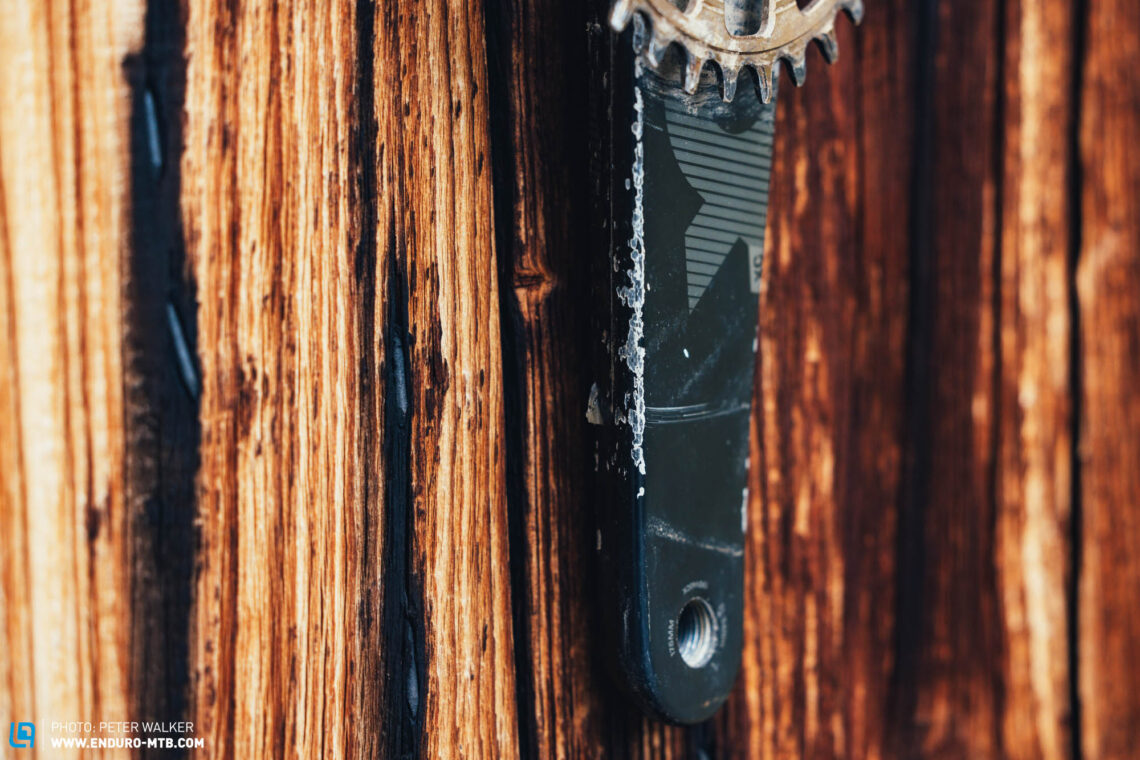
Did you enjoy this article? If so, we would be stoked if you decide to support us with a monthly contribution. By becoming a supporter of ENDURO, you will help secure a sustainable future for high-quality mountain bike journalism. Click here to learn more.
Words: Mike Hunger Photos: Peter Walker, Mike Hunger









